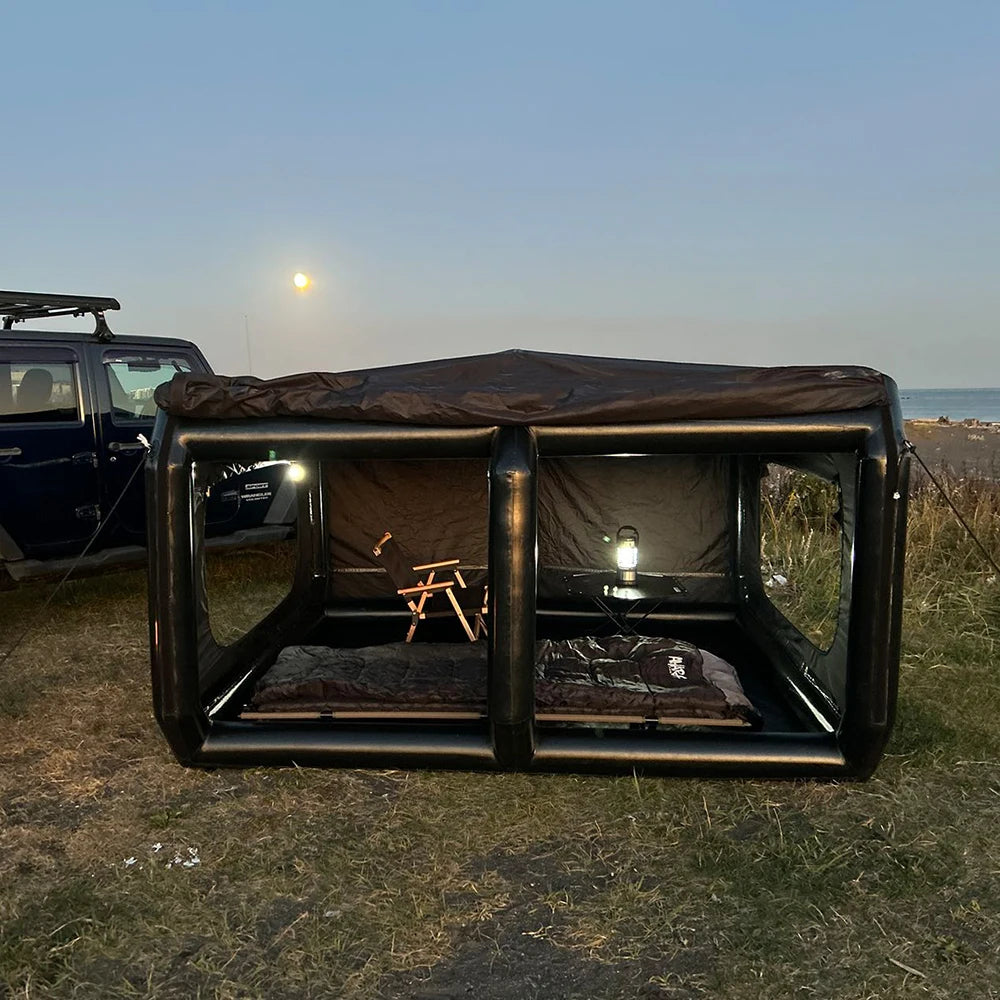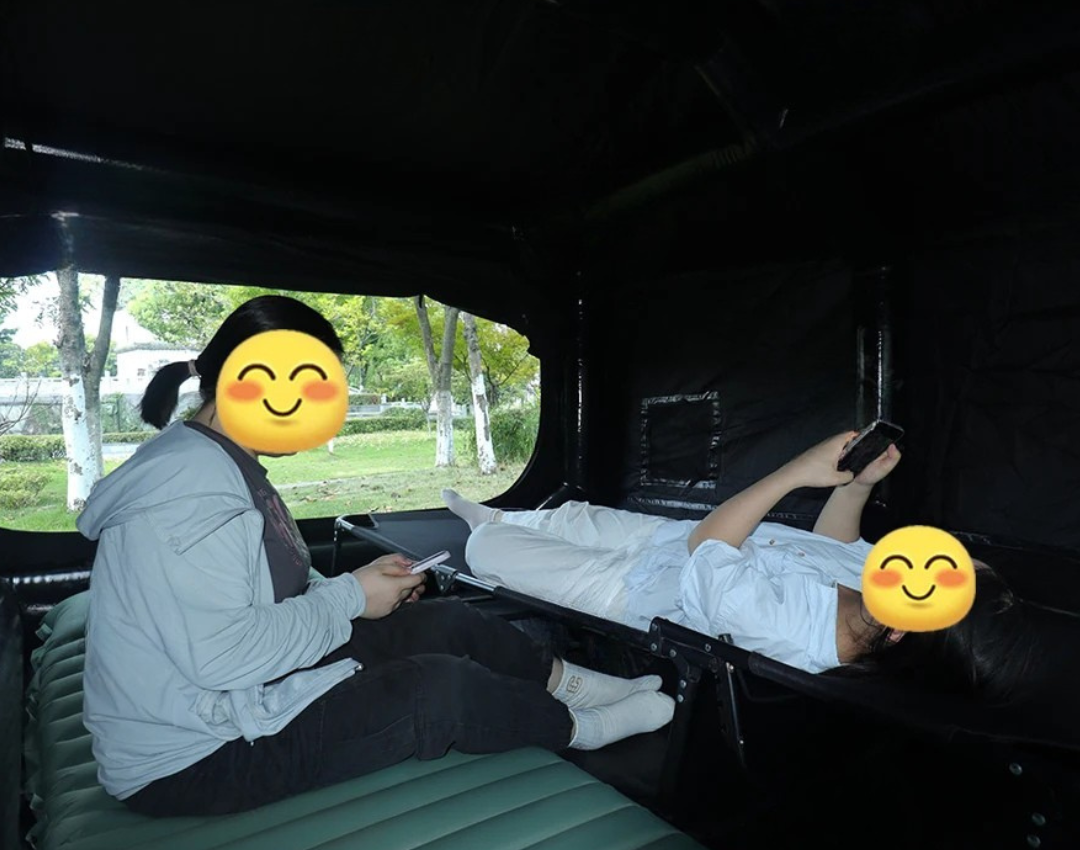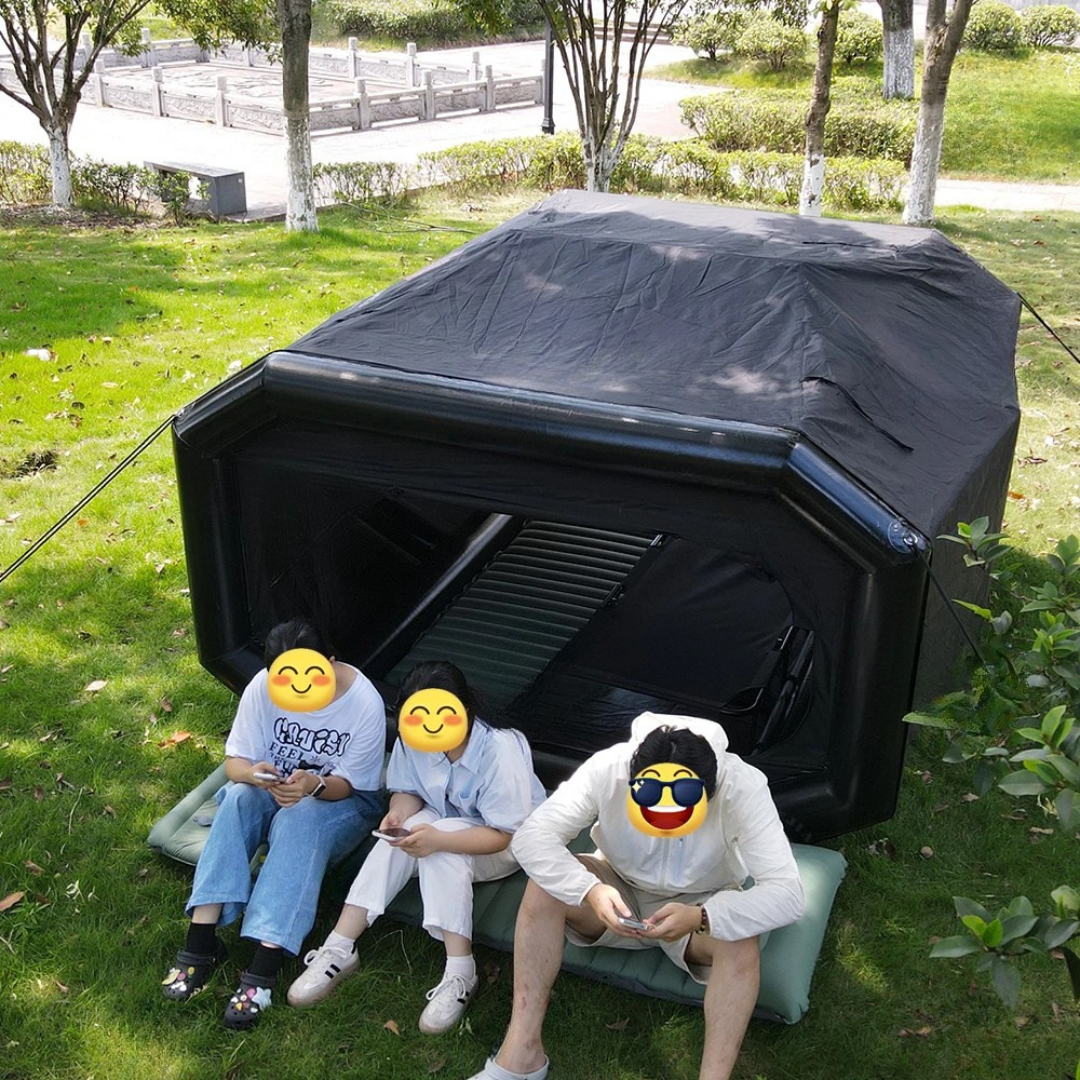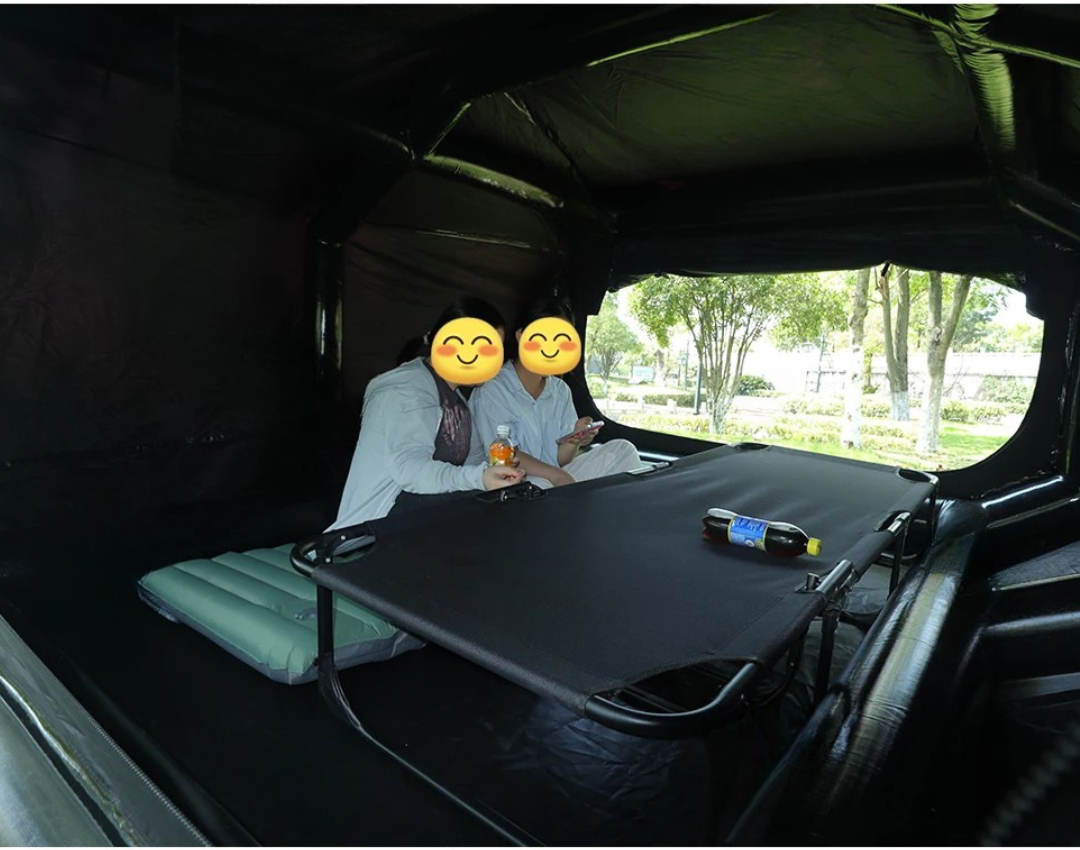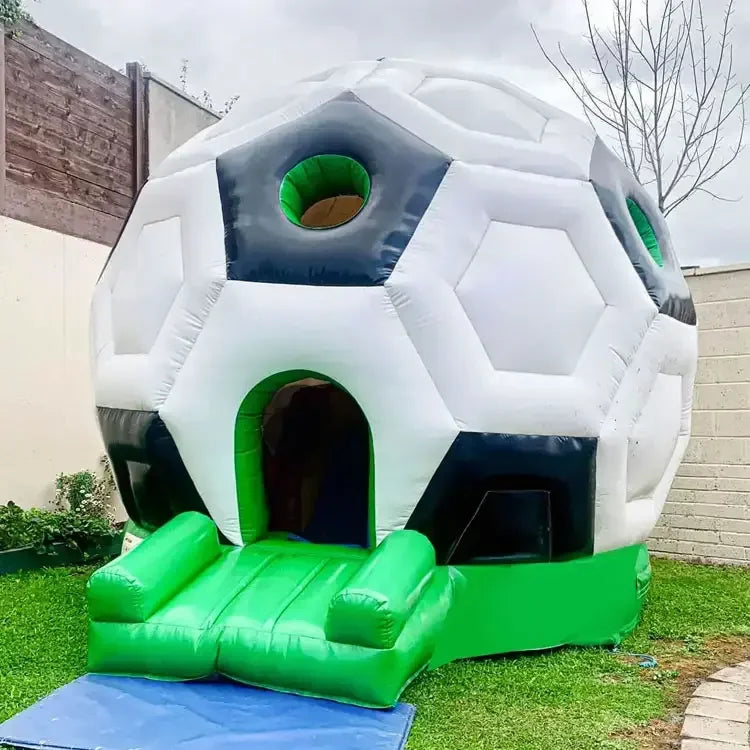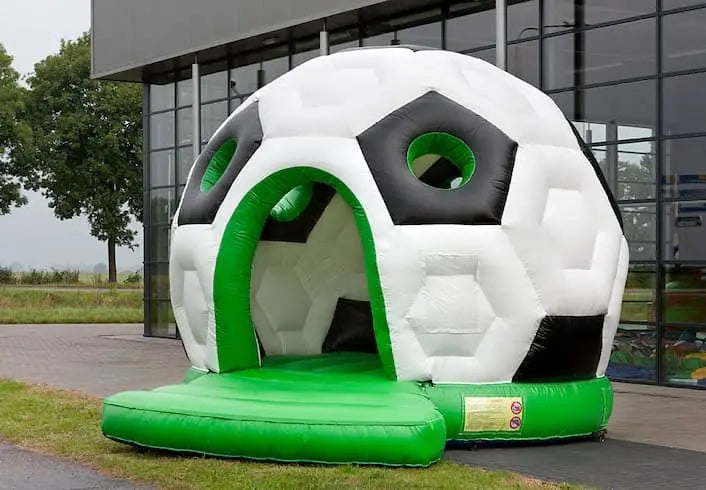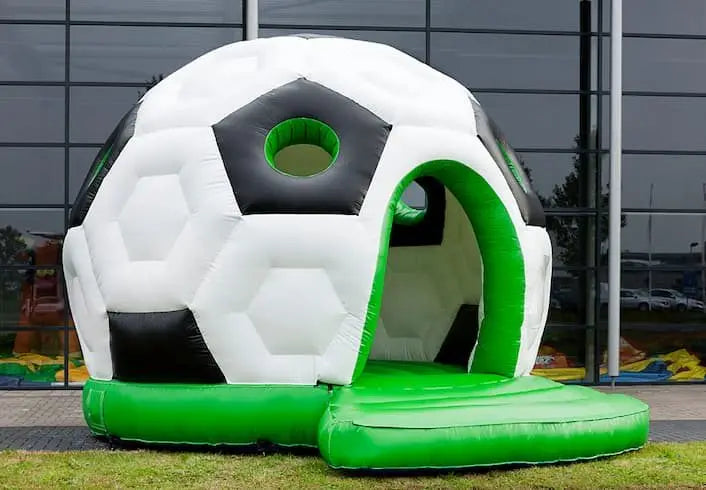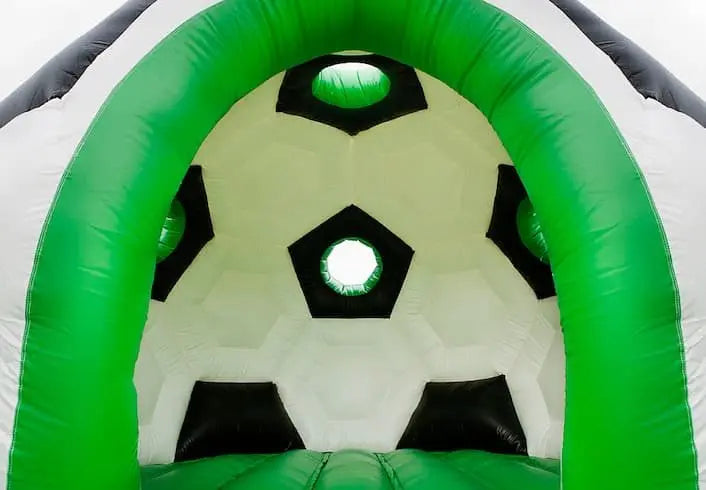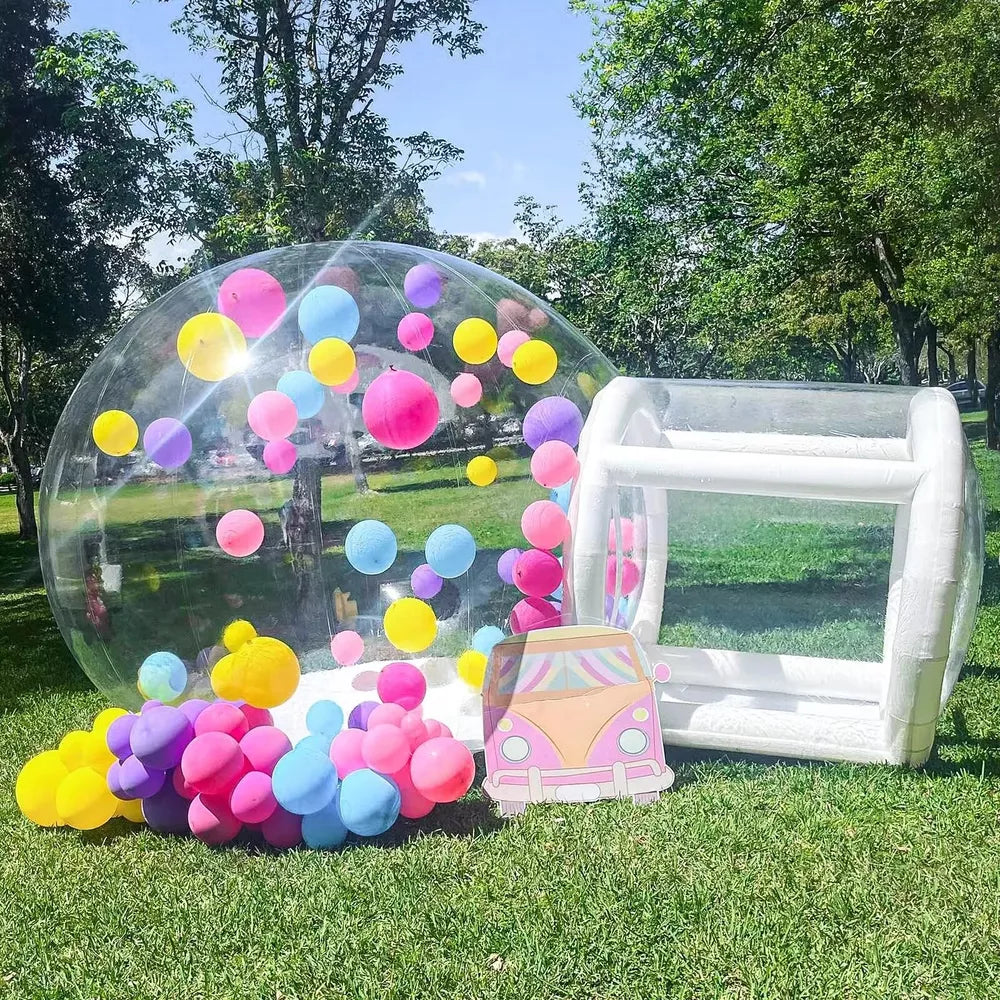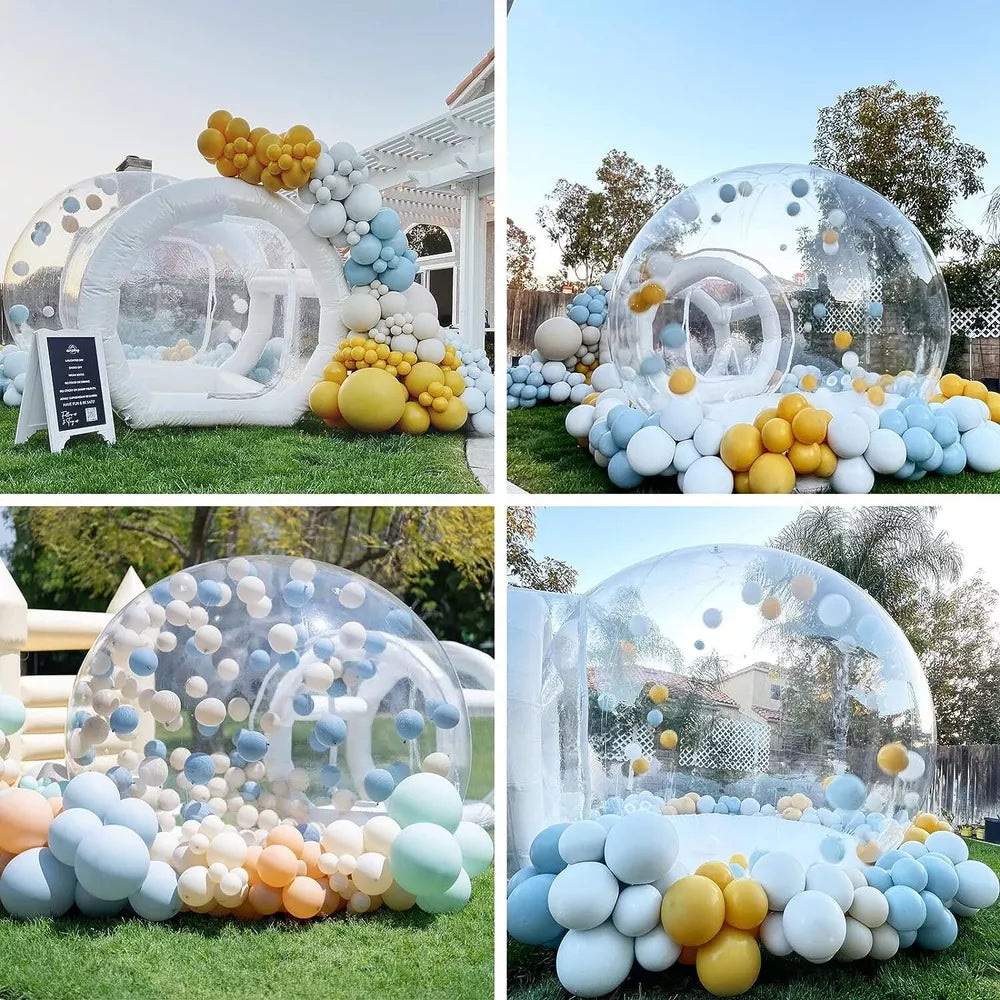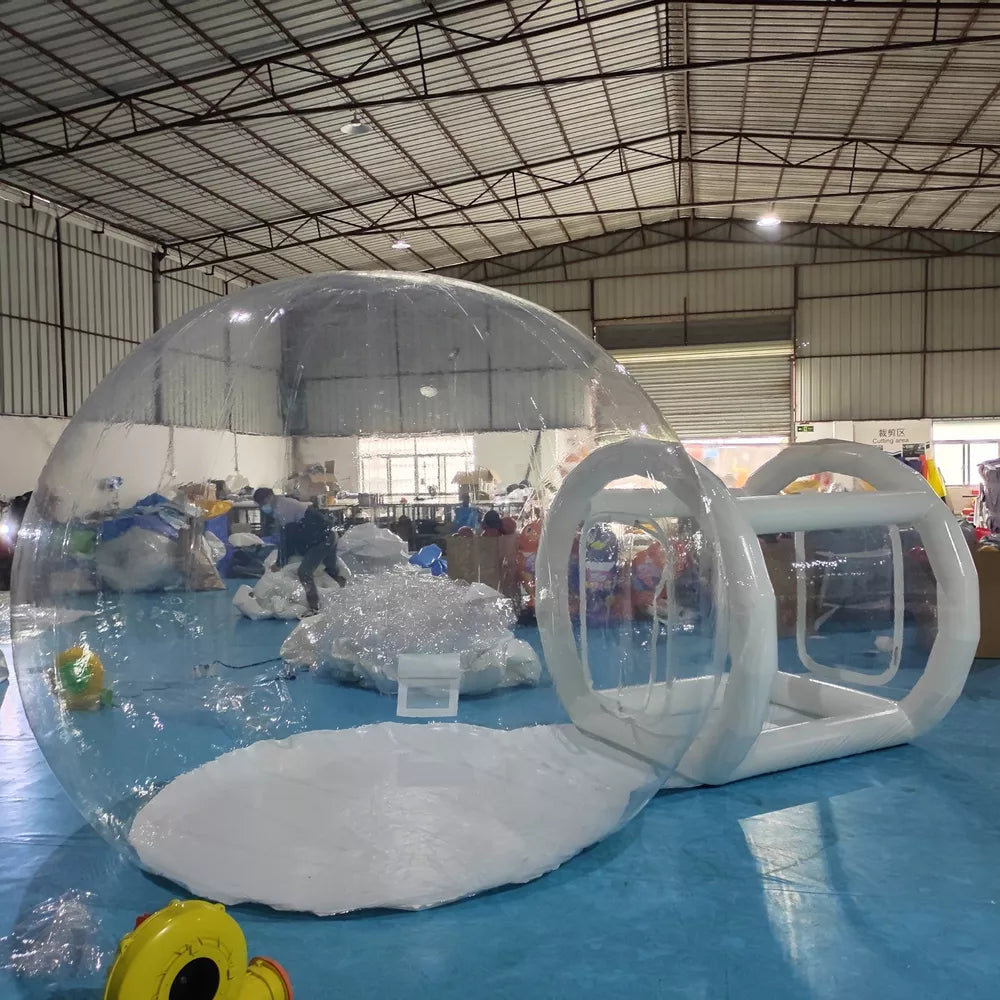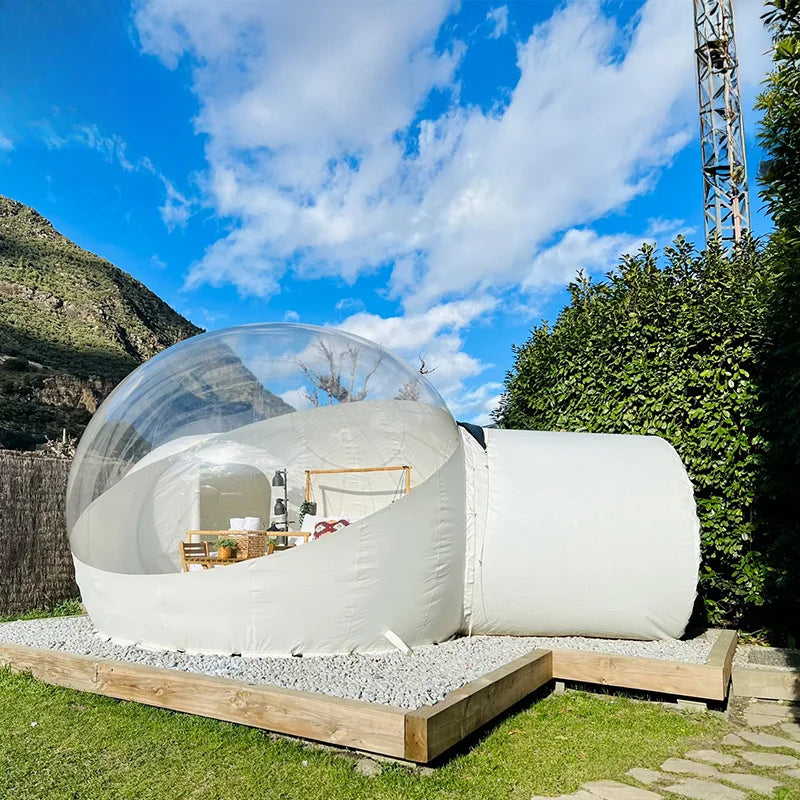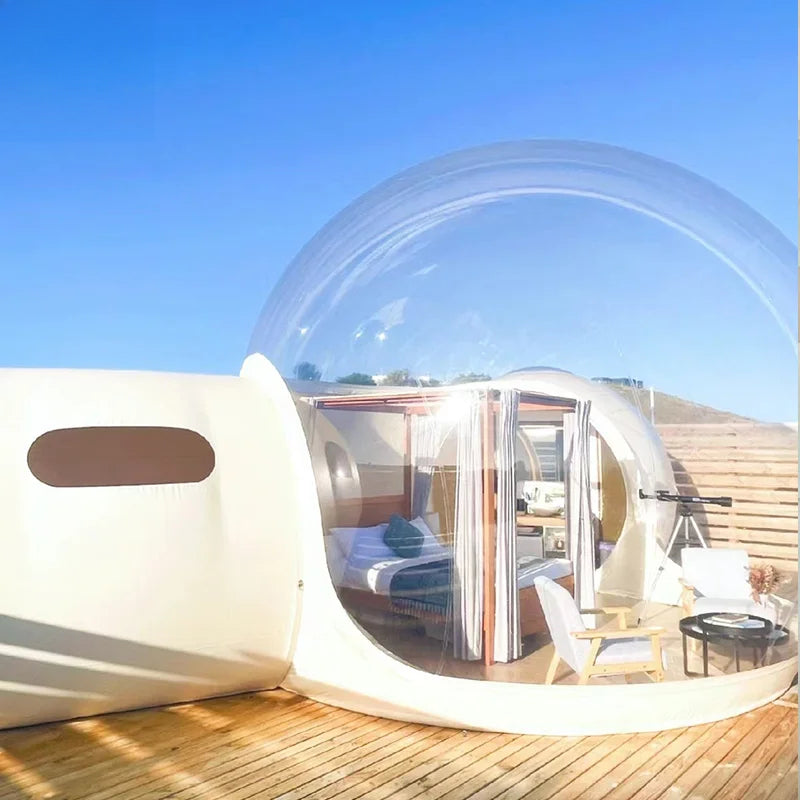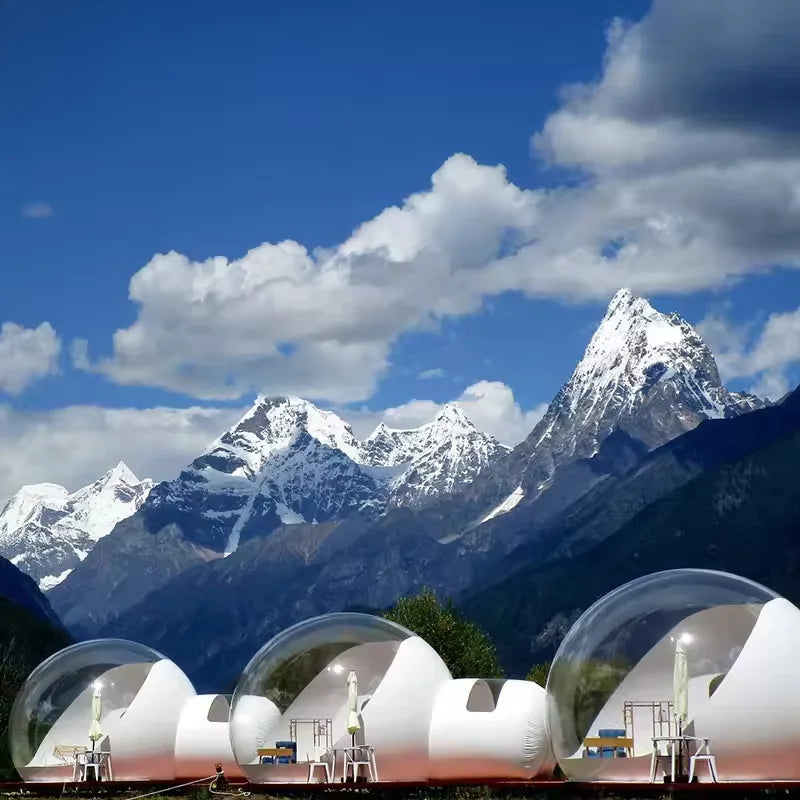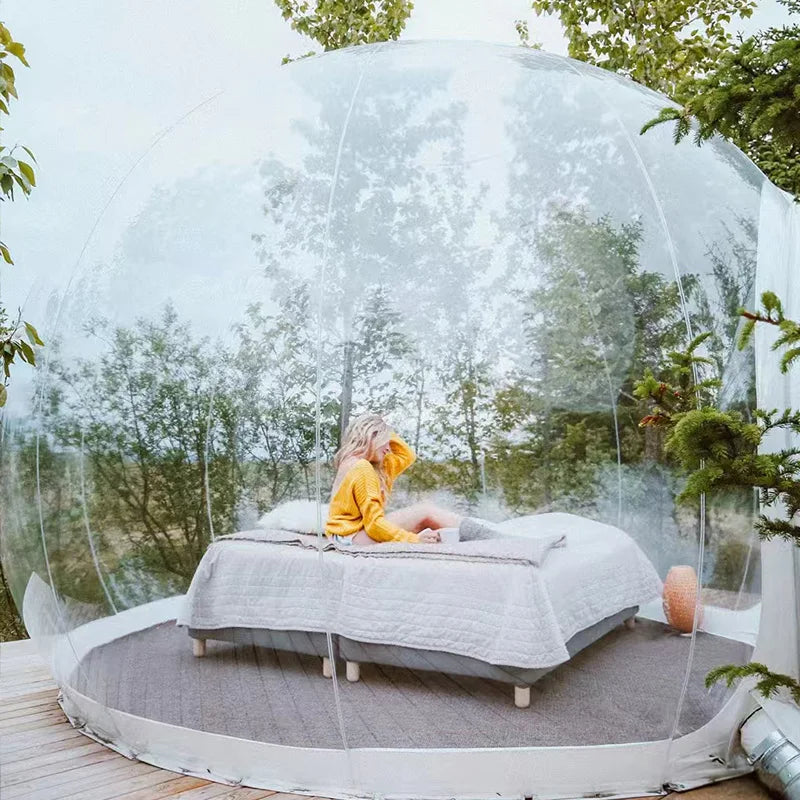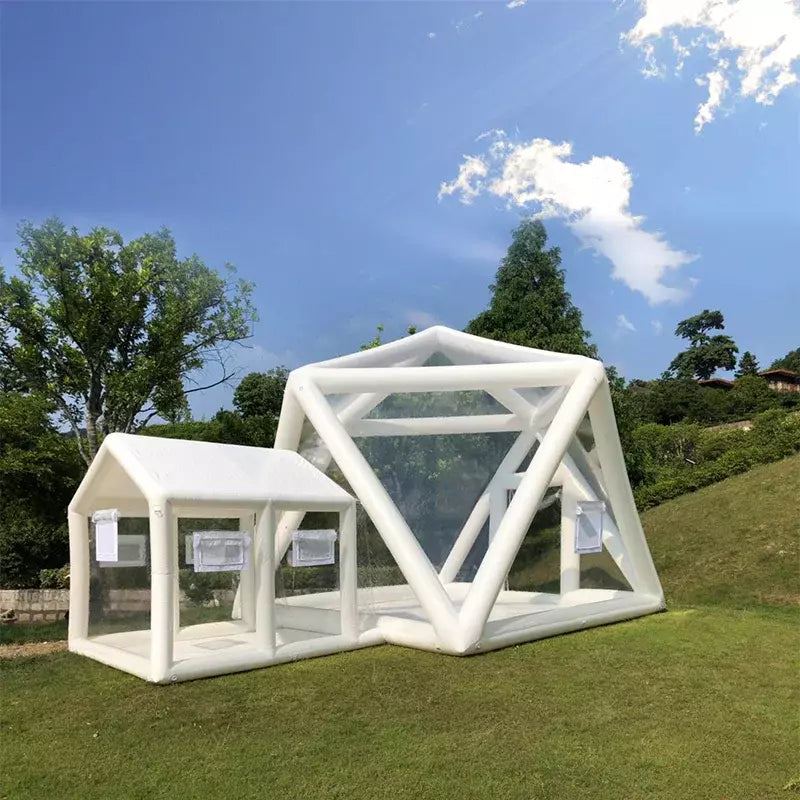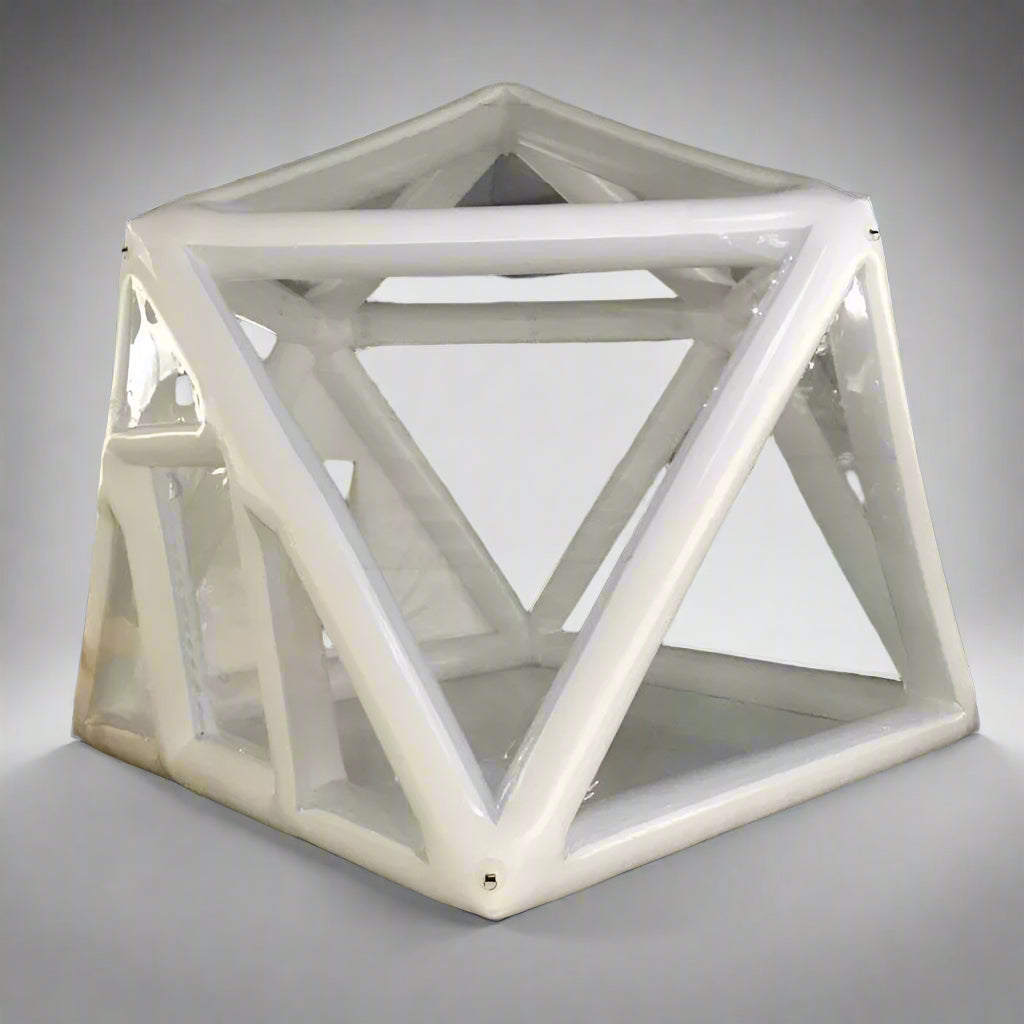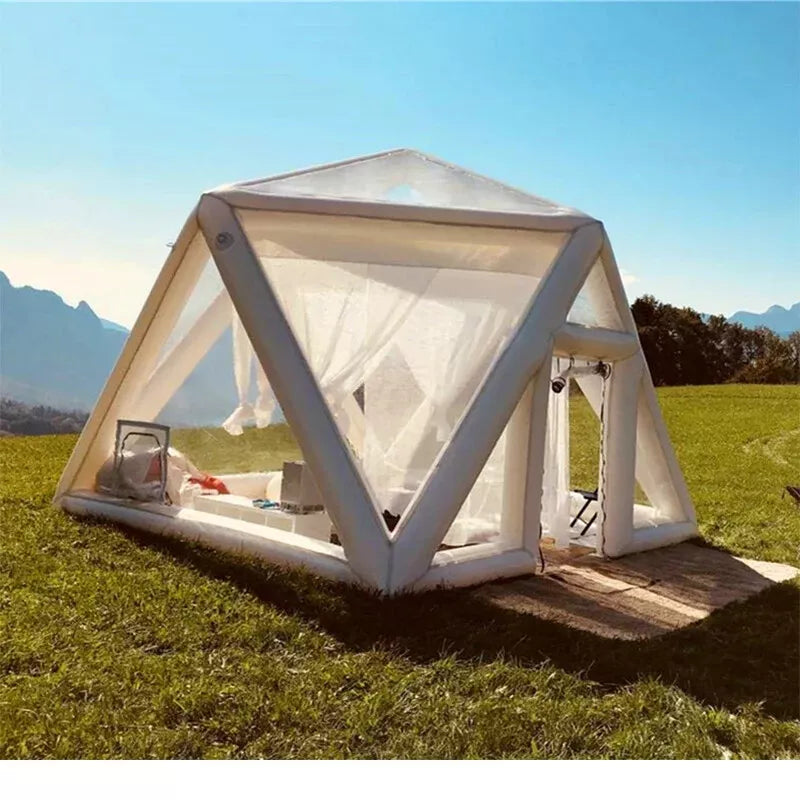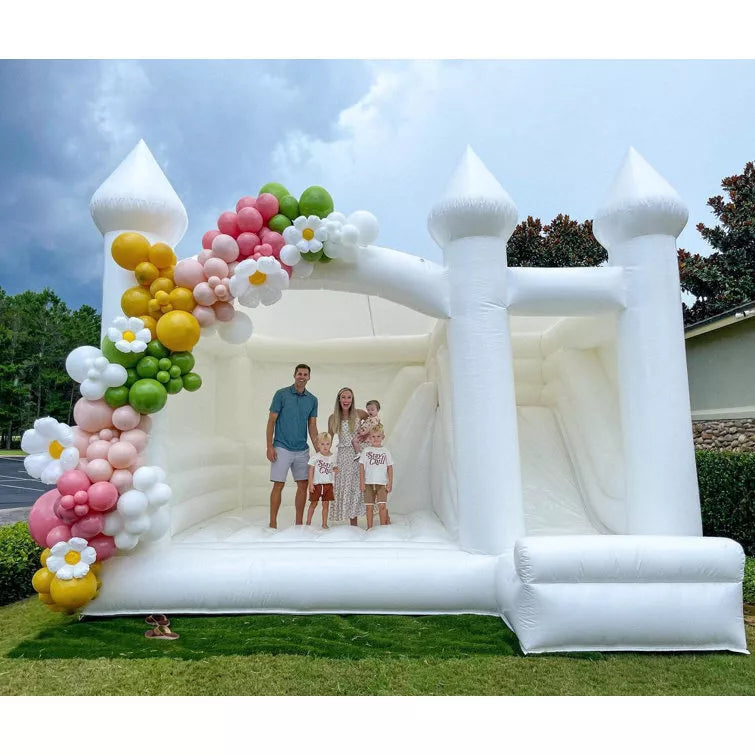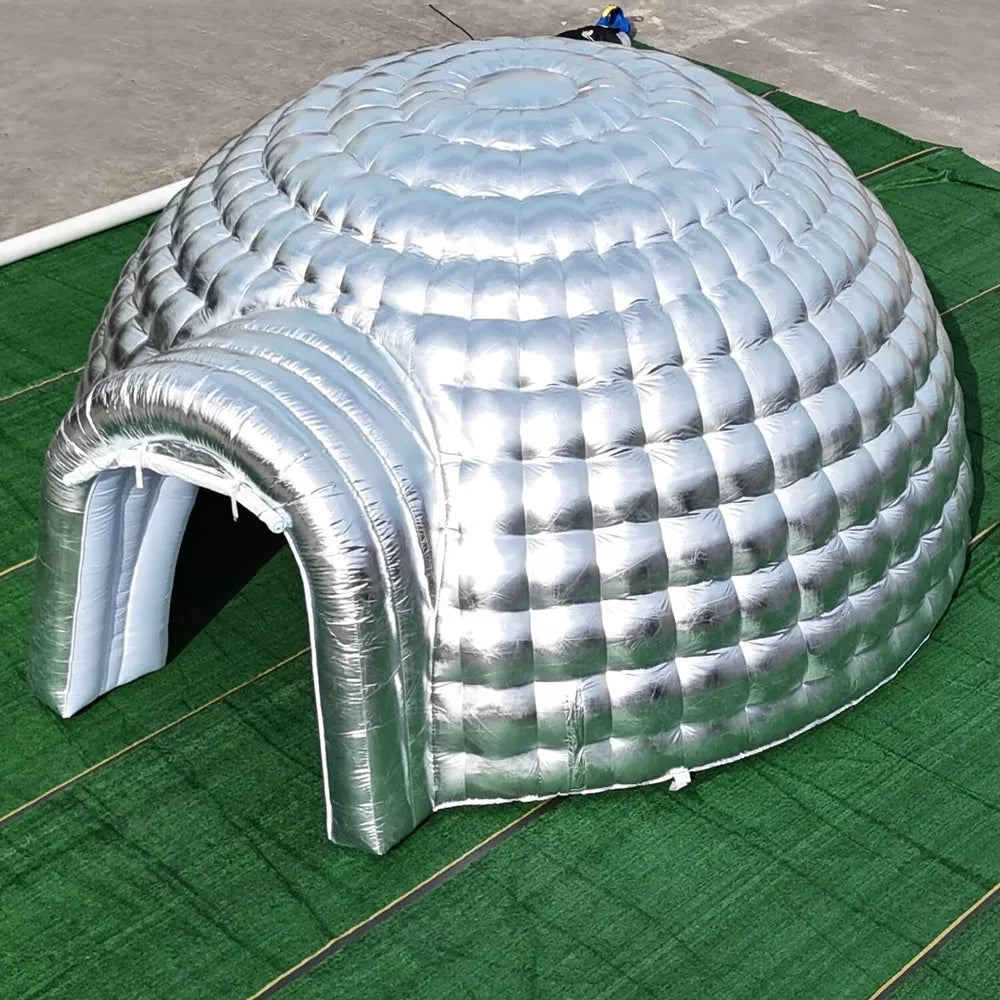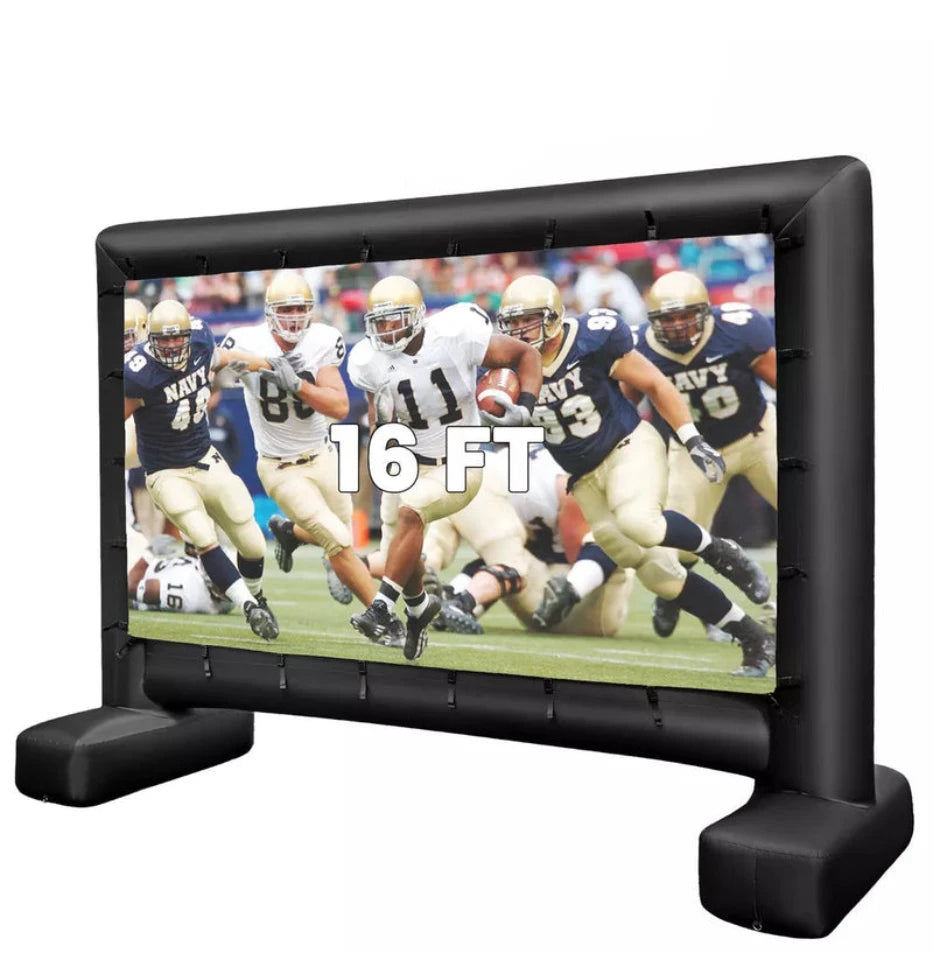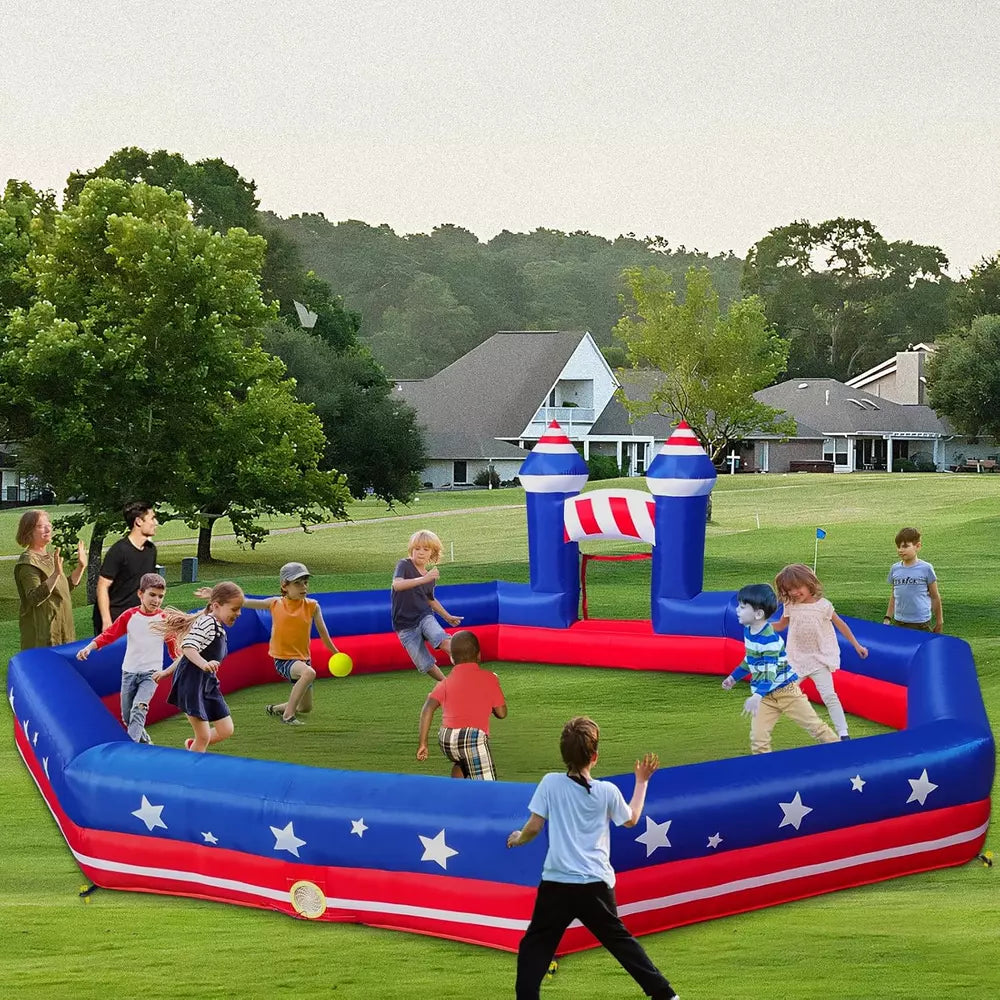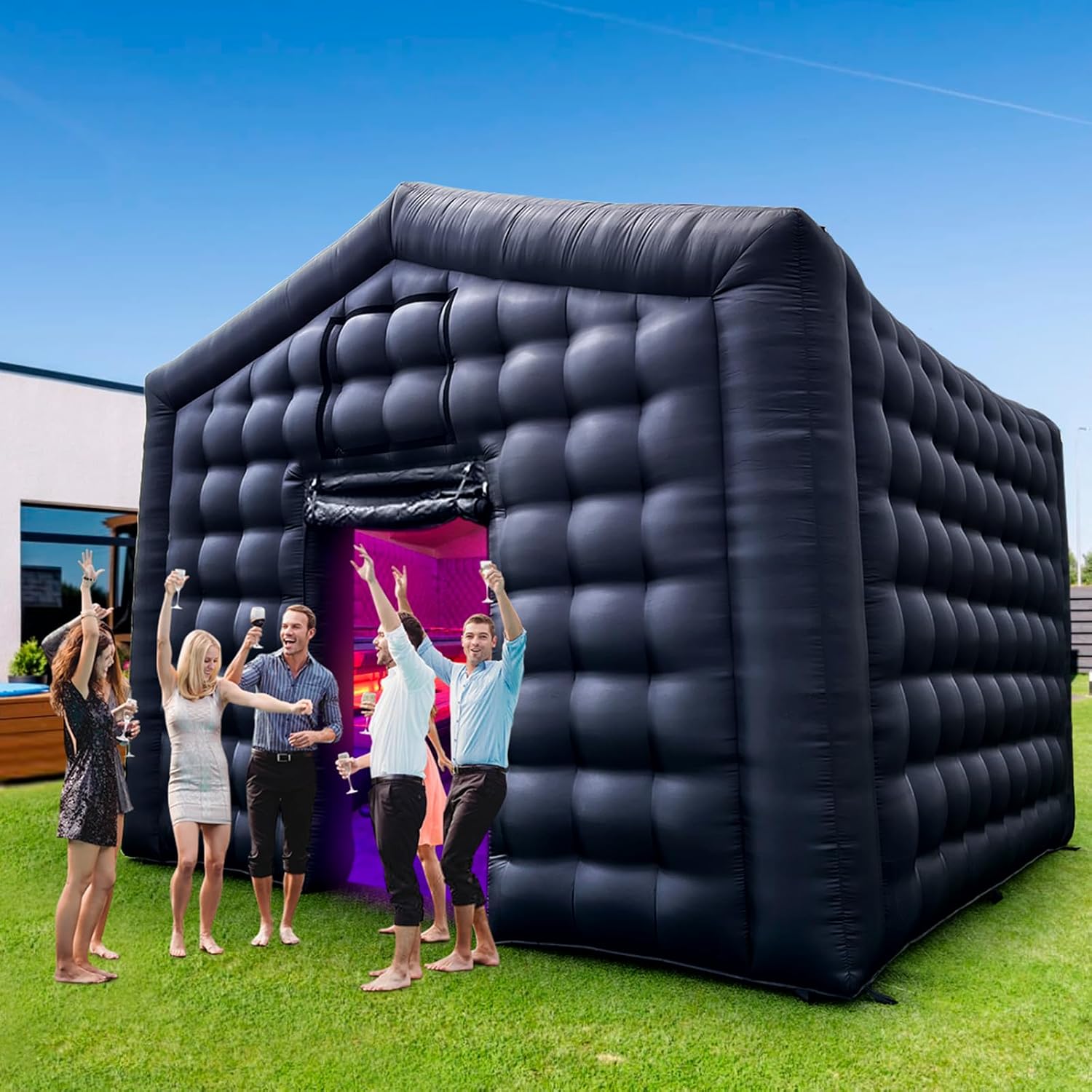Inflatable Camping Tent
Tired of wrestling with tent poles while your kids wait impatiently? Inflatable camping tents have changed the game for outdoor enthusiasts across America. Here at GotInflatables, our premium blow-up tents combine the convenience you crave with the durability your adventures demand. Picture this: you arrive at your campsite, unpack your tent, hook up the pump, and within minutes—not hours—you're ready to explore! Our tents aren't just affordable; they're backed by free shipping and crafted for easy setup. Shop our online collection today and discover why families keep coming back for our weather-resistant, spacious designs. Looking for something with a view? Our bubble tents offer a stargazing experience like no other.
5 products
Inflatable Football Dome Tent for Kids
Camping Bubble House Tent for Outdoor Events
Why Choose an Inflatable Camping Tent?
Let's face it—traditional tent poles can turn a peaceful camping trip into a relationship test. You know the scene: holding poles while your partner searches for the right sleeve, wondering why you didn't just book a hotel instead.
I remember my first camping trip with an inflatable tent. The family in the next spot was still arguing over their conventional tent instructions while my kids were already roasting marshmallows. That's the beauty of air beam technology—it transforms a frustrating experience into a simple one.
These innovative shelters use air instead of rigid poles, creating a setup so straightforward that even my 10-year-old nephew managed it without help last summer. Most campers report setup times under 10 minutes, which means more time hiking and less time frustrated in the dirt.
Wind resistance is another unexpected bonus. Last year during a surprisingly gusty weekend at Lake Michigan, I watched several traditional tents collapse while our inflatable model just swayed and held firm. The flexible air beams absorbed the force, then bounced right back to shape once the wind passed.
You'll notice the difference inside, too. Remember that cramped feeling in standard tents, where you're constantly hunched over? Air beams create more uniform interior height across the entire space. My 6'2" brother-in-law was shocked when he could stand upright through most of our family's inflatable camping house last Memorial Day weekend.
At GotInflatables, we've tested dozens of designs to find blow up camping tents that deliver real-world comfort. Whether you're planning a solo fishing trip or bringing the extended family, we've got options that fit. Just finished camping? Our bounce house collection makes a perfect backyard transition when you're not ready for the outdoor fun to end!
Easy Setup for Maximum Fun
"But how complicated is this thing to set up, really?" That's what my neighbor Tom kept asking before his first inflatable tent purchase. Let me walk you through the actual process—you'll be surprised how simple it is compared to the traditional tent struggle you've probably experienced.
First things first, find yourself a relatively flat spot. I've learned the hard way that taking an extra minute to clear away pinecones and rocks saves puncture repairs later! Once you've got your spot, unroll the tent with the door facing where you want it. This might seem obvious, but you'd be surprised how many people inflate first, then realize the entrance faces directly into the morning sun.
Close up all those windows and doors—this is crucial! My kids once left a window unzipped, and we ended up with a partially inflated, very sad-looking shelter that had them giggling but wasn't exactly functional.
Now for the fun part—connect your pump to the valve. Most tents come with specific valves designed for quick inflation. I've found electric pumps are worth their weight in gold if you camp frequently, though the manual pumps work perfectly well (and count as your pre-dinner workout).
Start pumping and watch the magic happen! The beams fill with air, gradually lifting your home-away-from-home into shape. There's something oddly satisfying about watching your shelter rise before your eyes—my daughters still find it fascinating even after countless camping trips.
Once fully inflated, secure those stakes and guy lines. This step matters more than you might think! On a trip to Colorado last summer, we watched an improperly staked tent tumble across the campground like an expensive, person-sized tumbleweed.
The whole process typically wraps up in about 7 minutes with an electric pump—that's less time than it takes to make your first cup of camp coffee. Even with a manual pump, most folks finish within 15 minutes, no sweat (well, maybe a little sweat with the manual pump).
For those planning business events rather than family outings, our branded inflatable tents offer the same easy setup with customizable branding options—perfect for outdoor markets and promotional events.
Should You Buy or Rent an Inflatable Camping Tent?
"Is it really worth buying one of these things?" My brother-in-law Dave asked this question for months before finally purchasing his own inflatable tent last spring. It's a fair question that deserves a straightforward answer.
If you're heading out more than twice a year, buying typically makes financial sense. Dave calculated that after four weekend trips, his purchase had already paid for itself compared to rental costs. Plus, he didn't have to drive across town to pick up and return a rental each time.
There's also something to be said for familiarity. Remember that first morning in a new tent, when you couldn't find the door zipper in the dark? When you own your gear, you learn its quirks. By his third trip, Dave had his setup down to a science, complete with the perfect spot for his camping lantern.
One unexpected benefit of ownership? You can practice in your backyard. Before taking her new inflatable camping tent to a music festival, my friend Sarah did a trial run at home. Smart move—she discovered one valve needed extra attention and was able to address it before being stuck in a field with thousands of other campers.
Renting makes sense in specific situations, though. If you're flying to a distant camping destination, if you're truly a once-a-year camper, or if you're just testing the waters of the outdoor lifestyle, a rental gives you flexibility. Just be prepared for limited availability during peak camping season—I've seen rental shops completely cleared out around major holidays.
For event planners and business owners, purchasing makes even more sense. The folks who run our local farmers market invested in several inflatable tent houses last year, and they use them weekly. Check out our igloo bounce house options if you're planning events that need to make a visual impact.
Most customers tell us they've used their GotInflatables tents for 5-7 years with proper care. When you spread that initial cost across dozens of camping trips, the value becomes clear as a mountain stream.
High-Quality, Durable, and Safe Inflatable Fun
"Will this thing pop if my kid jumps on it?" This question comes up so often in our customer chats. The short answer? Not with our tents!
Let me pull back the curtain on what goes into the construction of these inflatable shelters. We're not talking about flimsy pool toys here. The outer fabric on our standard models uses 600-denier polyester—that's similar to what you'd find in high-end luggage designed to survive airline handling. It's thicker and sturdier than ordinary inflatables, ensuring hours of safe enjoyment.
The waterproofing isn't just a light spray-on coating, either. During a particularly wet weekend in the Adirondacks last fall, our test team remained completely dry inside their inflatable tents while watching puddles form around neighboring campsites.
What happens if one air beam develops an issue? Nothing dramatic, thanks to isolated chamber design. Each main support inflates separately, so a problem in one section won't collapse your entire shelter. This feature saved a family camping trip for the Rodriguez family last summer—their 5-year-old accidentally punctured one beam with a roasting stick, but they simply moved sleeping arrangements slightly and continued their weekend without interruption.
Fire safety matters when you're potentially using cooking equipment nearby. Our materials meet CPAI-84 fire retardancy standards—the same ones required for traditional camping tents. On a practical level, this means small sparks from your campfire won't immediately threaten your shelter.
One thing parents particularly appreciate: no hard poles means fewer potential injuries. Traditional tent poles have caused countless skinned knees and even the occasional black eye during enthusiastic setup attempts. Air beams eliminate those risks entirely.
We've even considered environmental factors in our manufacturing. While we can't claim our tents grow on trees, we have reduced solvent use in production by 43% compared to industry standards, resulting in lower VOC emissions without compromising quality or durability.
Every tent undergoes real-world testing before joining our catalog. The Thompson model, for instance, spent two weeks in variable weather conditions in the Pacific Northwest before we approved it for production—it handled three consecutive days of rain without a single leak.
Versatility of Inflatable Camping Tents
"But I only camp in the summer—is this still worth it?" Dave from Michigan asked this during a customer service call last year. By the end of our conversation, he was planning camping trips for three different seasons!
That's the thing about these versatile shelters—they adapt to far more situations than most people initially imagine. Take the Trailblazer model, for instance. Last June, the Garcia family used it for a beach camping weekend. By October, they had reconfigured the same tent for a hunting base camp, using the modular dividers to create separate changing and sleeping areas.
The weather flexibility continues to surprise even experienced outdoorspeople. Jennifer, an avid camper from Oregon, called to share how her inflatable tent withstood unexpected snow flurries during an early spring trip to Crater Lake. The sloped design allowed the snow to slide off rather than accumulate and cause collapse—something her previous dome tent couldn't handle.
Size options cover nearly every need imaginable. Solo hikers might choose our compact Pathfinder that weighs just under 7 pounds packed, while the extended Reynolds family (all 8 of them!) comfortably shares our Expedition model with its three separate sleeping chambers and central living area.
Some customers find creative uses beyond traditional camping. The floating capability of certain models has made them popular for lakeside properties. The Martinez family in Minnesota sets up their inflatable floating tent on their dock during summer months, creating an instant guest room that stays cooler than the main house during July heat waves.
Festival-goers have embraced these tents for reasons beyond just quick setup. After a muddy weekend at a music festival in Tennessee, Sophia mentioned how easily she could clean her inflatable tent compared to her friend's traditional model with dozens of small crevices where dirt accumulated.
Portability remains a key advantage. Despite their sturdy construction, most of our inflatable camping tents compress down to about the size of a medium duffel bag. This makes them practical for camping trips where space is limited—like the motorcycle camping adventure Kyle documented last summer, fitting his one-person inflatable tent in a single saddlebag.
Whether your idea of camping involves mountain peaks, desert plains, or just your backyard during a pandemic staycation, our blow up tent camping options adapt to your environment and needs.
Get Your Inflatable Camping Tent Today!
Remember that feeling when you discovered something that genuinely made life better? That's what campers tell us after switching to inflatable tents. "I can't believe I struggled with poles for all those years!" is something we hear almost weekly.
Browse our collection right now and imagine your next outdoor adventure without the setup frustration. Whether you're eyeing the compact Trailblazer for solo trips or considering the Expedition for family gatherings, each model combines thoughtful design with practical features real campers need.
Why wait for your camping plans to firm up? With proper care, these tents serve families for years—meaning this summer's purchase becomes next year's tradition. Order today and take advantage of free shipping on every inflatable camping tent we sell.
Still weighing options? Perhaps you're wondering about specific features or have unique camping requirements? Reach out directly through our contact page. Sarah, Mike, and our other outdoor enthusiasts on staff love helping match campers with their perfect shelter.
The difference between a good camping trip and a great one often comes down to sleep quality and weather protection. When you're comfortable, rested, and dry, those sunrise hikes and starlit conversations become the memories that last a lifetime. Visit GotInflatables now—because your next amazing outdoor adventure deserves the right foundation.
Inflatable Camping Tent FAQ
How much space do I need for an inflatable camping tent?
You'll need the footprint size plus about 3 feet on each side for proper anchoring. Our popular family model, the Explorer, measures 10' × 12' but requires roughly a 16' × 18' clear area for optimal setup. Remember to account for sloped ground and nearby trees when measuring your available space at the campsite.
Are inflatable camping tents weatherproof?
They certainly are! Our tents feature waterproof ratings between 2000-3000mm hydrostatic head, depending on the model. The Johnston family from Seattle reported staying completely dry during a weekend of consistent rainfall last October. Remember that proper staking dramatically improves weather performance in windy conditions.
How long does it take to set up an inflatable camping tent?
Most campers complete setup in 5-10 minutes with an electric pump. Manual pumps typically add another 5 minutes. Compare that to the 25-30 minutes average for traditional pole tents! The Bennett family timed their setup process and found they saved nearly 20 minutes each time they made camp during their cross-country trip last summer.
Can inflatable tents be repaired if punctured?
Absolutely! Each tent includes a repair kit similar to what you'd use for a bicycle tire. Small punctures seal easily with the included patches, and most campers report repairs holding for the lifetime of the tent. The Matthews family successfully repaired their tent when their dog's claws caused a small tear, and they've used it for two more seasons without issues.
How do I clean and store my inflatable camping tent?
Wipe it down with mild soap and water after use, paying special attention to the bottom where dirt collects. Never pack it away damp! The Turner family learned this lesson the hard way and found mildew spots after storage. Now they always set up their tent in the backyard after rainy trips to ensure it's completely dry before long-term storage.
Are inflatable tents suitable for winter camping?
Some models work great for mild winter conditions. Our Expedition model has been tested in temperatures down to 20°F without issue. The insulating air layer in the beams actually provides better thermal protection than traditional poles. For serious snow camping, look for our specialized four-season models with enhanced insulation and steeper roof angles to prevent snow accumulation.
How durable are the air beams compared to traditional tent poles?
Surprisingly durable! The Howell family has used their inflatable tent for five seasons of regular camping without a single beam failure. The flexible nature of air beams actually provides an advantage in windy conditions—they bend rather than breaking. Traditional aluminum poles, by contrast, can snap permanently under similar stress. Many customers report their air beam tents outlasting their previous pole tents by several seasons.

